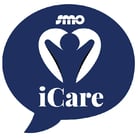.jpg)
High employee turnover can be the bane of any BSC or internal cleaning operation. You invest valuable time in money in your cleaning staff. Those investments provide little return when offset by high employee turnover rates.
Statistics indicate that turnover rates within the commercial cleaning industry have averaged ~ 200% over the past couple of decades. The national average for all industries combined has been ~ 90% over the same period. Constant hiring and rehiring can put significant stress on the bottom- line financial results of a cleaning operation.
The goal of improving employee retention should begin with your process of employee onboarding. Some tips to creating an onboarding program that will have lasting impact.
Employee Onboarding - More than Paperwork
The best employee onboarding processes consist of much more than just having the new employee sign a few documents. Many companies are now using their onboarding processes to build the foundation for improvements in employee satisfaction, motivation, and retention. Most successful processes have a few basic things in common:
- More than a one-day effort: A high-impact employee onboarding process will actually begin a few days before the new employee reports to work. Beginning the process early gives the employee a positive indication that you are enthusiastic about his/her joining your team. The process should continue for the period of time required to ensure that new employees are fully onboarded into all aspects of your organization (culture, expectations, benefits, growth opportunities, etc.).
- Participatory in nature: An effective onboarding process will require---and encourage---active participation from the employee. It will be more than just the employer feeding information to the employee. An employee that actually participates in the onboarding process will begin his or her employment feeling empowered and confident in his or her ability to perform their job.
- A formalized approach: A documented employee onboarding process is crucial to achieving consistency in your approach. A documented plan will also help ensure that all critical elements of your process have been covered.
First Impressions Go Both Ways
It is critical that a potential new hire make a positive impression on the employer; that is a given. What is often overlooked is the importance of the employer using the onboarding process as an opportunity to make a positive, and lasting, first impression on the new employee. Those first few days of interaction can go a long way in setting a tone of mutual trust and loyalty.
Your adoption of a robust new employee onboarding process can be the lynchpin in your efforts to improve employee retention and to turn the tide against costly high turnover rates.


.jpg?width=5000&name=Tips%20on%20Effectively%20Onboarding%20New%20Employees%20(1).jpg)

.jpg?width=220&height=135&name=Blog%20Listing%20Image%20(13).jpg)
-1.jpg?width=220&height=135&name=Blog%20Listing%20Image%20(5)-1.jpg)

.png?width=180&height=138&name=Untitled%20design%20(25).png)


